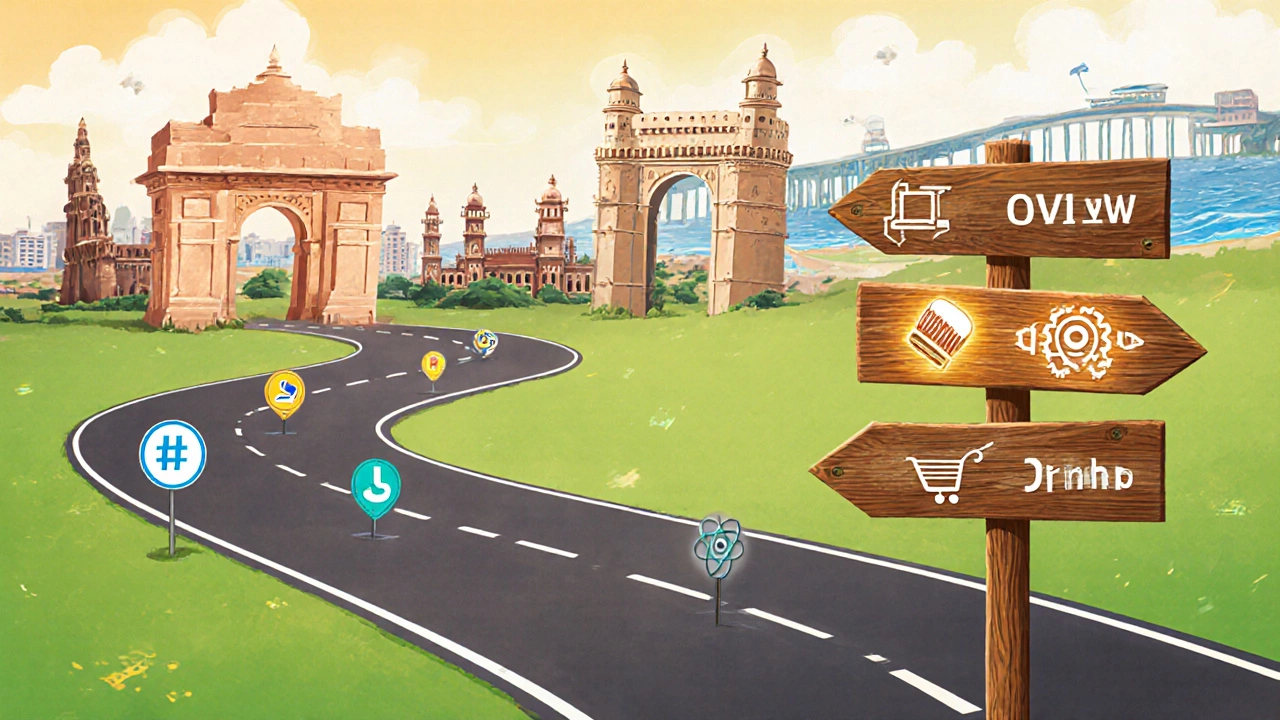Freelance Web Developer Hourly Rate Guide 2025
Freelance Web Developer Rate Calculator
Estimate your hourly rate based on experience, location, skills, and project complexity.
Freelance Web Developer is a self‑employed professional who builds, maintains, and optimizes websites for clients on a contract basis.
If you’re trying to figure out the freelance web developer hourly rate you’ll hit a lot of numbers that don’t quite line up. Why does a junior dev in Auckland charge NZ$45 while a senior specialist on Toptal bills US$150? The answer lives in a mix of experience, geography, skill set, project complexity, and the platform you source work from. Below you’ll find the exact factors that shape pricing, real‑world examples, and a handy table to compare typical ranges.
Why rates vary so much
Think of a rate as the intersection of four main entities:
- Experience Level (years of professional work, portfolio depth, and proven results)
- Geographic Region (local cost of living, market demand, and currency strength)
- Skill Set (front‑end frameworks, back‑end languages, DevOps know‑how, UI/UX design ability)
- Project Complexity (scope, integrations, performance requirements, and timeline tightness)
Each of these entities has measurable attributes that directly influence what a client is willing to pay and what a developer feels comfortable earning.
Experience Level and its price bands
Experience isn’t just a number of years; it’s a proxy for reliability, problem‑solving speed, and the ability to anticipate client needs. Below are the three most common brackets you’ll see on freelance platforms:
- Junior (0‑2years) - usually works with HTML, CSS, basic JavaScript, and maybe a starter CMS like WordPress. Hourly rates range from US$25‑$45 (NZ$38‑$68).
- Mid‑level (3‑6years) - comfortable with React or Vue, can handle API integration, and often knows Node.js or PHP. Rates climb to US$55‑$90 (NZ$85‑$140).
- Senior (7+years) - specialist in full‑stack architecture, performance tuning, security, and can lead a remote team. Expect US$110‑$180 (NZ$170‑$280).
These numbers are averages from 2024‑2025 market surveys conducted by Upwork, Toptal, and local NewZealand freelance groups.
Geographic Region: where you live matters
Even in a borderless digital world, local economies shape buying power. Below is a quick snapshot of how the same experience level translates across four key regions:
| Region | Junior | Mid‑level | Senior |
|---|---|---|---|
| North America | 30‑50 | 60‑95 | 120‑190 |
| Europe (Western) | 28‑45 | 55‑90 | 110‑170 |
| Australasia (NZ & AU) | 38‑68 (NZ$) | 85‑140 (NZ$) | 170‑280 (NZ$) |
| Asia (India, Philippines) | 15‑25 | 30‑55 | 70‑110 |
Notice how senior rates in Auckland sit comfortably between US$110‑$180 and NZ$170‑$280, reflecting the country’s higher cost of living compared with many Asian markets but lower than typical US rates.
Skill Set: niche expertise commands premium
A developer who can spin up a SPA with React, hook it to a GraphQL backend, and deploy via Docker will earn more than one who only builds static sites. Here are a few high‑value skill clusters:
- Full‑stack JavaScript - Node.js, React/Vue, serverless functions. Adds ~20% to base rate.
- Performance Optimization - Lighthouse scoring, lazy loading, CDN strategy. Usually a senior‑only surcharge of US$15‑$30/hr.
- UX/UI Design - Figma or Sketch integration, accessibility compliance. Can bump rates by 10‑15%.
- E‑commerce Integration - Shopify, Magento, Stripe, PayPal. Often a separate “integration fee” of US$200‑$500 on top of hourly work.
Clients looking for a single‑person solution that covers both development and design will pay a premium, because they avoid the overhead of hiring two specialists.
Project Complexity: the hidden multiplier
Complex projects-think multi‑language portals, high‑traffic SaaS platforms, or custom CMS builds-require more planning, testing, and risk management. Two extra entities come into play:
- Client Type (startup, SMB, enterprise, agency)
- Market Platform (Upwork, Toptal, local networking, direct outreach)
Enterprises often have rigid procurement processes and demand SLAs; they’re willing to pay “enterprise‑grade” rates of US$150‑$200/hr for senior talent. Startups, on the other hand, may prioritize speed over polish and negotiate lower rates in exchange for equity.
A useful rule of thumb: multiply the base rate (defined by experience, region, and skill) by 1.2 for moderate complexity, and by 1.5 for high‑risk, high‑visibility projects.

How to set your own rate (or negotiate as a client)
Whether you’re a freelancer drafting a proposal or a business budgeting a new site, follow these steps:
- Identify your Experience Level and list concrete achievements (e.g., “Built a Shopify store that generated $250k in sales in 6months”).
- Calculate a base hourly range using the regional table above.
- Adjust for Skill Set: add 10‑20% for each high‑value cluster you possess.
- Factor in Project Complexity: apply the 1.2‑1.5 multiplier as needed.
- Consider Currency conversion and payment fees if you’re working cross‑border. For example, PayPal fees can shave 2‑3% off a US$100 invoice.
- Write a clear scope with milestones. Clients appreciate transparency, and it reduces scope creep that can eat into your effective hourly earnings.
Freelancers should also set a minimum “floor” rate-often the junior‑level regional lower bound-to ensure they don’t undercut themselves.
Common pitfalls and how to avoid them
Even seasoned freelancers fall into traps that erode income:
- Over‑promising, under‑delivering. Always match your advertised skill set to real experience. If you claim expertise in GraphQL but haven’t built one, you’ll waste time and credibility.
- Ignoring hidden costs. Tools like Figma, premium plugins, or API usage can add up. Include a small contingency (5‑10%) in your proposal.
- Charging per project without a clear hourly ceiling. Fixed‑price deals can be lucrative, but only when you’ve scoped every edge case.
- Failing to renegotiate. If a project’s scope expands, revisit the hourly rate. A simple “change order” clause protects both parties.
Where to find work and how platform choice affects rates
Different Market Platforms (online marketplaces where freelancers bid for jobs) have distinct fee structures and client expectations:
- Upwork - 20% service fee on the first US$500, dropping to 10% then 5% as you earn more with a client. Rates tend to be lower because of high competition.
- Toptal - rigorous vetting, higher‑end clients, and a 15% markup on freelancer rates. Senior developers often fetch US$150‑$200/hr.
- Direct outreach - using LinkedIn or local NZ tech meet‑ups. No platform fees, but you must handle contracts and invoicing yourself.
When you’re just starting, Upwork can help you build a portfolio. As you gain testimonials, shift to Toptal or direct deals for better net rates.
Quick reference cheat‑sheet
| Experience | Region | Base Rate | +Skill Premium | Complexity Multiplier |
|---|---|---|---|---|
| Junior | Australasia | 38‑68 NZ$ | +10% for full‑stack JS | 1.0‑1.2 |
| Mid‑level | North America | 60‑95 | +15% for UX/UI | 1.2‑1.5 |
| Senior | Europe (Western) | 110‑170 | +20% for performance opt. | 1.5‑1.8 |
Next steps for freelancers
1. Audit your current skill list and map it to the premium clusters above.
2. Use the regional table to set a realistic base range.
3. Update your profiles on Upwork and Toptal with concrete metrics (e.g., "Reduced page load time by 2seconds for a SaaS client").
4. Draft a standard contract that includes a change‑order clause and clear payment terms.
Next steps for clients
1. Define project scope and list required skill clusters.
2. Reference the cheat‑sheet to set a budget ceiling.
3. Choose a market platform that aligns with your risk tolerance - Upwork for low‑risk, Toptal for high‑impact work.
4. Ask candidates for case studies that match your industry.

Frequently Asked Questions
What is a fair starting hourly rate for a brand‑new freelance web developer in Auckland?
For a junior developer (0‑2years) in Auckland, a realistic range is NZ$38‑$68 per hour. This reflects local living costs and the baseline skill set of HTML, CSS, and basic JavaScript.
How does specialty in React or Vue affect my rate?
Adding a modern front‑end framework like React or Vue usually bumps the hourly rate by about 10‑20%. So a mid‑level developer earning US$70/hr could charge US$84‑$84 for those skills.
Do I need to charge extra for e‑commerce integrations?
Most freelancers add a flat integration fee (US$200‑$500) on top of the hourly rate because connecting payment gateways, inventory systems, and custom checkout flows involves extra testing and security work.
Is it better to charge per project or per hour?
Both work; choose per‑hour when scope is uncertain or the client wants flexibility. Use fixed‑price contracts when you can clearly define deliverables, as they often appeal to budget‑focused clients.
How do platform fees impact my net earnings?
Upwork takes 20% on the first US$500 billed to a client, then 10% up to US$10,000, and 5% beyond that. Toptal adds a 15% markup. Subtract these from your gross hourly rate to see the true take‑home pay.
What currency should I invoice in when working with overseas clients?
Most freelancers invoice in USD because it’s widely accepted and stable. If you’re based in NewZealand, you can quote NZD and let the client handle conversion, but be aware of exchange‑rate fluctuations and possible bank fees.





